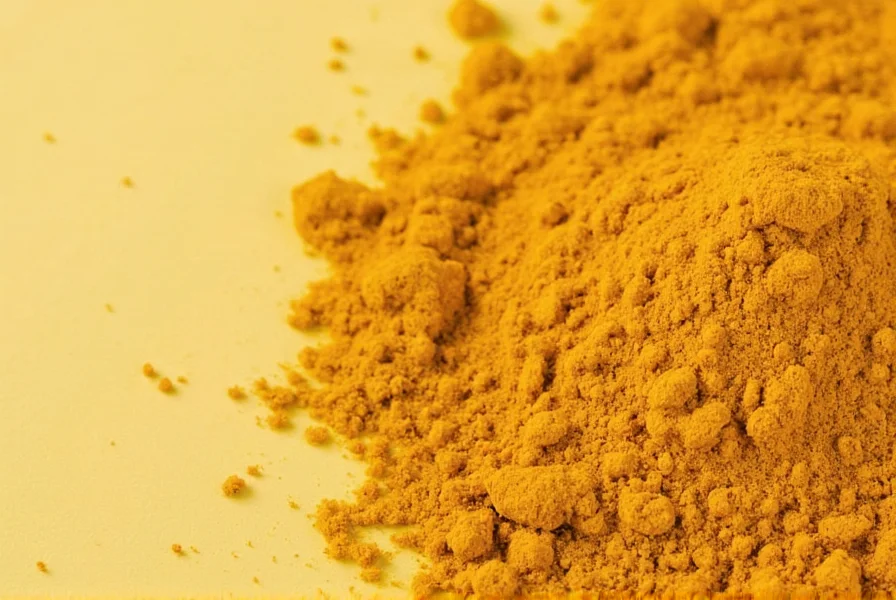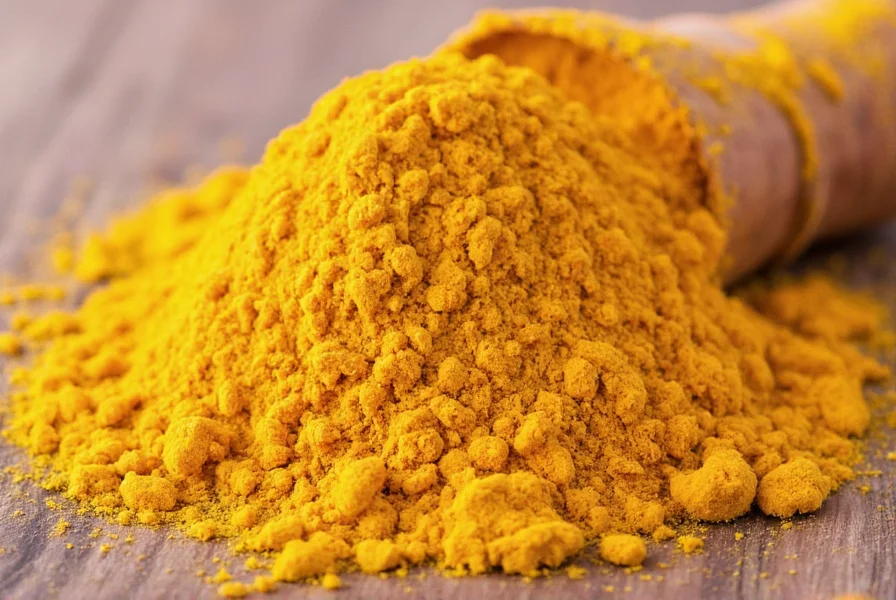Scientific research shows that curcumin, turmeric's active compound, has poor bioavailability when taken alone. Taking turmeric supplements with food—particularly meals containing healthy fats—increases absorption by up to 2,000%. The addition of piperine from black pepper further enhances bioavailability by 2,000%. For chronic inflammation management, consistent daily dosing matters more than specific clock times.
Understanding Turmeric's Anti-Inflammatory Mechanism
Turmeric contains curcuminoids, with curcumin being the primary active compound responsible for its anti-inflammatory properties. Curcumin works by inhibiting multiple inflammatory pathways and enzymes, including COX-2, LOX, and NF-kB. Unlike pharmaceutical anti-inflammatories that target single pathways, curcumin's multi-target approach makes it particularly effective for chronic inflammation conditions.
However, curcumin's therapeutic potential is limited by its poor bioavailability. When consumed alone, curcumin has low solubility in water, rapid metabolism, and quick systemic elimination. This explains why timing and formulation are critical factors for experiencing turmeric's anti-inflammatory benefits.
Key Factors Affecting Turmeric Absorption
The effectiveness of turmeric supplementation depends on several interrelated factors beyond just timing:
| Factor | Impact on Absorption | Practical Application |
|---|---|---|
| Fat content | Increases absorption up to 2,000% | Take with meals containing healthy fats (avocado, olive oil, nuts) |
| Piperine (black pepper) | Boosts bioavailability by 2,000% | Choose formulations with 5-10mg piperine per dose |
| Dosing frequency | Maintains consistent blood levels | Divide daily dose into 2-3 smaller doses |
| Formulation type | Liposomal or nanoparticle forms increase absorption 10-20x | Consider enhanced absorption formulations for chronic conditions |
Optimal Timing Strategies for Inflammation Management
Research indicates that consistent daily intake matters more than specific clock times, but strategic timing can enhance results:
With Meals vs. Empty Stomach
Taking turmeric with food significantly improves absorption while reducing potential gastrointestinal discomfort. A 2019 study in Nutrition Journal found that consuming curcumin with a standard meal increased absorption by 197% compared to fasting conditions. The fat content in meals triggers bile release, which emulsifies curcumin and enhances its uptake.
For those experiencing digestive sensitivity, taking turmeric with the largest meal of the day provides optimal absorption while minimizing stomach upset. This approach works particularly well for best time to take turmeric with food for inflammation management.
Morning vs. Evening Consumption
While research doesn't show significant differences between morning and evening dosing for general inflammation, specific conditions may benefit from strategic timing:
- Arthritis sufferers may benefit from evening doses to reduce morning stiffness
- Post-exercise recovery responds best to turmeric taken within 30 minutes after activity
- Chronic systemic inflammation requires consistent daily dosing regardless of time
For most people seeking optimal timing for turmeric supplementation to reduce inflammation, dividing the daily dose between breakfast and dinner provides balanced coverage throughout the day.
Scientific Evidence on Turmeric Timing
A comprehensive 2021 review in Phytotherapy Research analyzed 27 clinical trials on curcumin bioavailability. The review concluded that:
"The most significant factor influencing curcumin absorption is co-administration with lipids and piperine, not specific timing. However, divided dosing (2-3 times daily) maintains more stable plasma concentrations than single daily doses, potentially enhancing anti-inflammatory effects for chronic conditions."
Another study published in Drug Design, Development and Therapy tracked curcumin blood levels in participants taking 500mg doses. Those taking divided doses maintained therapeutic blood levels for 18 hours compared to just 8 hours with single doses. This evidence supports the best schedule for turmeric intake to combat inflammation as multiple smaller doses throughout the day.
Practical Implementation Guide
Based on current evidence, here's how to optimize your turmeric regimen for inflammation:
- Determine your daily dose: Most studies use 500-1,500mg of standardized curcumin daily
- Divide your dose: Split into 2-3 smaller doses taken with meals
- Pair with fats: Consume with meals containing healthy fats (avocado, olive oil, nuts)
- Include black pepper: Ensure your supplement contains piperine or add freshly ground pepper to food
- Be consistent: Take at approximately the same times daily for steady blood levels
For those using culinary turmeric rather than supplements, adding 1/2 teaspoon of turmeric to meals with black pepper and healthy fats provides approximately 200mg of curcumin. This approach works well as a natural timing strategy for turmeric consumption to reduce inflammation.
Individual Factors to Consider
Your ideal turmeric timing may vary based on several personal factors:
- Medication interactions: Turmeric may interact with blood thinners; consult your healthcare provider about appropriate timing
- Digestive sensitivity: Those with sensitive stomachs should take turmeric with larger meals
- Specific health conditions: Autoimmune conditions may respond better to morning dosing
- Sleep patterns: Evening doses may benefit those with sleep disturbances related to inflammation
For individuals exploring when to take turmeric supplement for maximum anti-inflammatory effect, tracking symptoms alongside dosing times for 2-4 weeks can help identify your personal optimal schedule.

Common Misconceptions About Turmeric Timing
Several myths persist about the best time to take turmeric:
- "Morning is always best" - Research shows consistent daily dosing matters more than specific times
- "On an empty stomach works better" - Actually reduces absorption and increases digestive upset risk
- "Single large doses are sufficient" - Divided dosing maintains more consistent therapeutic blood levels
- "Time of day affects potency" - Curcumin's mechanism isn't time-dependent like some medications
Understanding these misconceptions helps optimize your approach to best time to take turmeric curcumin for inflammation without falling for common misinformation.
When to Expect Results
Unlike pharmaceutical anti-inflammatories that provide rapid relief, turmeric works gradually. Most studies show measurable reductions in inflammatory markers after 4-8 weeks of consistent use. The optimal duration for turmeric supplementation to reduce inflammation appears to be at least 8-12 weeks for chronic conditions.
For acute inflammation (like post-exercise soreness), some users report benefits within 24-48 hours when using enhanced absorption formulations. However, consistent daily use produces the most significant long-term anti-inflammatory effects.
FAQ: Turmeric Timing for Inflammation
Q: Should I take turmeric in the morning or at night for inflammation?
A: Research shows consistent daily dosing matters more than specific timing. For most people, dividing your daily dose between morning and evening meals provides optimal coverage. Those with arthritis may benefit from evening doses to reduce morning stiffness, while athletes might time doses around exercise periods.
Q: Can I take turmeric on an empty stomach for better absorption?
A: No, taking turmeric on an empty stomach actually reduces absorption and increases the risk of digestive discomfort. Curcumin is fat-soluble, so it requires dietary fats for proper absorption. Always take turmeric with meals containing healthy fats like avocado, olive oil, or nuts for maximum effectiveness.
Q: How many times per day should I take turmeric for inflammation?
A: For optimal results, divide your daily turmeric dose into 2-3 smaller doses taken with meals. This approach maintains more consistent blood levels of curcumin throughout the day compared to single large doses. Most clinical studies showing anti-inflammatory benefits use this divided dosing strategy.
Q: Does the timing of turmeric affect its interaction with medications?
A: Yes, timing can affect potential interactions. If you take blood thinners or diabetes medications, consult your healthcare provider about appropriate spacing between medications and turmeric. Generally, separating turmeric doses from medications by 2-3 hours may reduce interaction risks while maintaining anti-inflammatory benefits.
Q: How long after eating should I take turmeric for best absorption?
A: Take turmeric during or immediately after eating, not before or long after meals. The fats and bile released during digestion are essential for curcumin absorption. Consuming turmeric with your meal ensures it moves through the digestive system alongside the fats needed for optimal uptake.











 浙公网安备
33010002000092号
浙公网安备
33010002000092号 浙B2-20120091-4
浙B2-20120091-4